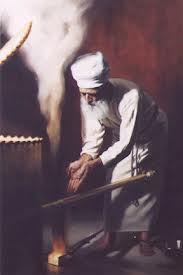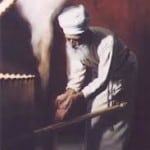Ideas and vision are important tools in furthering us into growth and achievement. Yet at times the passion to fulfill an idea or a vision tramples all who stand in the way and those who dare to disagree. That divisive trait destroys the purity of the ideal and ensures its failure. It is that phenomenon that continues to haunt the people of Israel in their long voyage of destiny until this very day.
The rebellion of Korach and his followers with Moshe and Aharon follows such a pattern. On the one hand Korach raises important theological and national concerns and issues.
Is everyone equal before Hashem in their spiritual journey?
Can a nation walking a walk of faith and destiny equate equality with sameness?
Regardless of these questions, we clearly see that the true agenda of Korach and his followers was for the sake of self-aggrandizement and not in pursuit of ultimate truth. Korach could have raised all these issues with Moshe and Aharon in a private meeting with the two leaders. Instead Korach and his followers chose to raise the banner of dissent and split the camp in rancor and hatred.
The severity of Korach’s rebellion was devastating, less because of the arrogance of the rebels, but mainly due to the confusion and doubt that it planted in the hearts and the minds of the people. Confusion leads to great disunity and panic and fear. These in turn have fatal results.
After the ground swallowed up the rebels we read the following;
“The following day, the entire congregation of Israel complained against Moshe and Aaron saying, “You have killed the people of Hashem.”(Numbers 17:6)
It is then that we read about the incense, the ketoret.
When a plague breaks out in the midst of the complaints of the children of Israel, “Moshe said to Aaron, “Take the censer and put fire from the altar top into it. Then take it quickly to the congregation and atone for them, for wrath has gone forth from Hashem, and the plague has begun.” ( ibid 17:11)
What is the secret of the Holy Incense, the ketoret? What is the source of its life saving property? Clearly it was g-d that spared the people from the plague but the Ketoret pointed to a change of heart that was life changing.
The Hebrew word for incense, ketoret, is related to meaning of binding or tying. The unique character of the incense reflects the message of harmony and inter-connectivity.
The eleven ingredients of the ketoret brought together eleven different and variant fragrances. In the description describing these ingredients the following statement is repeated twice; “But if he left out any of its spices, he is liable to the death penalty.” What would be so important about the inclusion of all eleven scents that the precautionary declaration had to be repeated?
Furthermore one of the spices called galbanum (chelbenah), was included despite its unpleasant odor as a critical ingredient. This is problematic as we are taught that all sweet savors and smells in this world are born out of the power of life and renewal while all pungent and putrid smells always come from the power of death and decay .
Yet the galbanum was included.
Ten is a powerful number in Jewish symbolism. It is the number of the quorum that is needed to come together in prayer and bring G-d within the gathering. Man obviously can pray as a solitary individual, yet the power of the quorum of ten, like the Hebrew letter yud,(the letter representing 10) denotes an inherent higher level of in-dwelling Presence.
Yet the ketoret is made up of eleven and not ten ingredients. The Baal Hatanya explains that, to increase the level of Divine participation beyond the level of ten, we must include the eleventh constituent—even if he is not a regular member of your spiritual circle, even if he is represented by the foul smelling galbanum.
Teshuva cannot only be fueled by passion and zeal. It must be intrinsically connected with inclusion. Teshuva cannot be accessed unless the individual connects him or themselves to the “greater whole” of the community.
The rebellion of Korach brought about confusion, hatred and a breakdown of the community. In the midst of that painful disunity, death began to seep in and destroy. The fragrance of the Ketoret represented the exact opposite of that disunity. It returned to the “disunified “a memory of the fragrance of the power of life.
It would be reflected in the words of the descendants of that same divisive Korach;
“For the conductor, by the sons of Korah, a song. Hear this, all you peoples; hearken, all You inhabitants of the earth. Both the sons of “adam,”( the simple) and the sons of “ish,”(the elite) together rich and poor.(Psalm 49:1-3).
This will be a critical lesson for all the people of Israel today. Though a cause and purpose may be righteous and true , the unity of our people needs to be maintained at all times. It was that disunity and blind hatred that led to the destruction of the Temple we will soon be mourning in commemoration. It is that same disunity that keeps hampering in our constant walk towards to redemption. Ideals and vision cannot be ignored nor discarded yet the methods to achiebve these goals must be inclusive and loving. In the words of Rav kook;
If we were destroyed, and the world with us, due to baseless hatred, then we shall rebuild ourselves, and the world with us, with baseless love — ahavat chinam. (Orot HaKodesh vol. III, p. 324)
LeRefuat Yehudit bat Golda Yocheved

